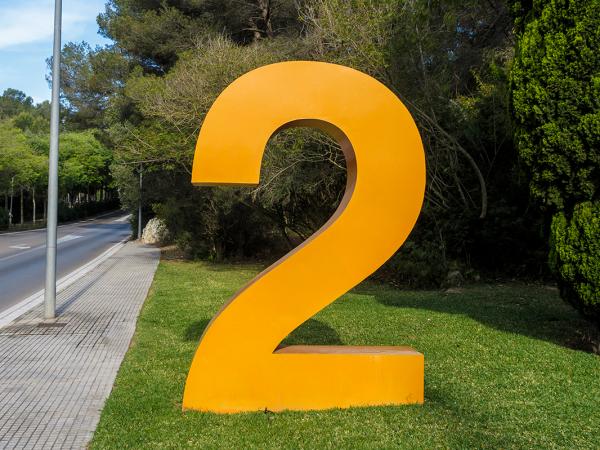Child tax credit
Child tax credit is paid by HM Revenue and Customs (HMRC) to support families with children. It is paid independently of child benefit and is payable whether you are working or not.

Content on this page:
Overview of child tax credit
There are certain basic conditions to meet to qualify for child tax credit. You must:
- be aged 16 or over,
- be ‘in the UK’ – this means you must be present, ordinarily resident and, for child tax credit, have a right to reside in the UK. You normally cannot claim if you are subject to immigration control but there are some exceptions to this.
- be responsible for a child or qualifying young person (see below).
From 6 April 2017, the Government introduced a 2 child limit policy for child tax credit, universal credit and housing benefit. This means that if you have a third or subsequent child born on or after 6 April 2017, you may not get paid the child element of child tax credit for them unless an exception applies, although you should still report the change to HMRC.
The 2 child limit policy does not apply to the disability element of child tax credit or to the childcare element of working tax credit. See our 2 child limit policy page for more information about how the two child limit works.
Being responsible for a child or qualifying young person
To get child tax credit, you must be responsible for a child or qualifying young person. Being responsible for a child or qualifying young person means:
- The child or young person ‘normally lives with you’, or
- If the child or young person normally lives with both you and with another person, then you will be responsible for them if you have ‘main responsibility’ for them
You will not be responsible for a child or young person who is:
- in care; or
- placed with others for fostering or adopting
- serving certain custodial sentences or detained at His Majesty’s pleasure
- receiving tax credits for a child of their own
- receiving contributory employment and support allowance for himself or herself or receiving working tax credit in their own right
- living with a spouse, civil partner or partner and that person is not in full time education or approved training
- living with a spouse, civil partner or partner and that person is the responsible person. This does not apply to people in receipt of child tax credit for a young person who is living with a partner before 1 September 2008.
If a child is living with you under the terms of a residence order, or special guardianship order, or you have adopted the child, or (in Scotland) you are a kinship carer, you are treated as responsible for the child, even if the local authority is making a discretionary payment because the child is no longer being 'looked after' by the local authority.
The ‘normally living with’ test
A child or young person normally lives with you if he or she ‘regularly, usually, typically’ lives with you barring occasional or temporary absences.
The main responsibility test
This is the test applied when there are competing claims, and you and another person each have grounds for saying that the child or young person 'normally lives with' you. In such cases you should try and decide between you who has the main responsibility and tell HMRC; but if you cannot agree, HMRC will make the decision.
When deciding on main responsibility, the factors HMRC take into account include the following:
- who the child normally lives with and where they keep the majority of their belongings such as clothes and toys
- who is responsible for the day to day spending for the child such as buying clothes and food and providing pocket money
- who is the main contact for the school, nursery or childcare provider
- who is responsible for the health care and hygiene of the child such as making appointments with the doctor or dentist, or doing the child's laundry
- what is the registered address for contact for the school, nursery or childcare provider, or for health care
- who has legal custody of the child
Age limits
You can claim child tax credit for a child up to their 16th birthday. From their 16th birthday they will be classed as a young person.
Between their 16th birthday and the following 31 August (or from 31 August if their 16th birthday falls on that date), they will be counted as a ‘qualifying young person’ without the need to be in full time education or training.
To continue to be treated as a young person after this date, they must be under 20 and in full time non-advanced education or approved training.
There is more information on our child tax credit for young people aged 16 or over page.
The disabled child element
The child disability element is an element of child tax credit that provides additional financial support for children or qualifying young people with disabilities or long-term health problems. It is payable a two different rates – the disabled child rate and the severely disabled child rate. The two child limit does not apply to the child disability element.
For child tax credit, a child or young person is disabled if:
- disability living allowance (DLA) or personal independence payment (PIP) is payable for them, or is normally payable but has ceased because they are a patient in hospital; or
- they are certified as severely sight impaired or blind by a consultation ophthalmologist or have ceased to be certified as blind or severely sight impaired in the last 28 weeks immediately preceding the date of claim
- disability assistance is payable for them (Scotland), or is normally payable but has ceased because they are a patient in hospital.
A child is classed as severely disabled if the care component of DLA or disability assistance (Scotland) is payable for them at the highest rate, an armed forces independence payment (AFIP) or the enhanced daily living component of the PIP, or is abated while they are in hospital.
Scottish disability payments for children (replacing DLA) started to be paid from July 2021.
Child tax credit elements
The amount you get depends on how many children are included in your claim (which may depend on the two child limit policy), whether you are entitled to either rate of the child disability element, your annual household income for tax credit purposes and whether an overpayment is being deducted.
The following elements make up a CTC award:
- Child element
-
This element is included for each child on the claim born before 6 April 2017. If all the children on the claim are born on or after 6 April 2017, a child element is generally only included for up to two children unless any exceptions apply. Where some children on the claim are born before 6 April 2017 and some on or after – generally, where the child born on or after 6 April 2017 is the 3rd or subsequent child on the claim, no child element will be included for them unless one of the exceptions applies.
If this rule applies to you, it is very important to check whether any of the exceptions apply because you could miss out on extra money.
See our 2 child limit policy page for more information.
- Disabled child element
-
This element is paid at two rates depending on whether your child is classed as disabled or severely disabled for child tax credit purposes.
Disabled child rate – this rate is given for each child who meets the disabled child criteria
Severely disabled child rate – this rate is given for each child who meets the severely disabled child criteria
- Family element
-
One family element is given per family where the claim includes a child or children born before 6 April 2017.
If the only child/children on the claim are born on or after 6 April 2017, the family element is no longer included.
Things to note about child tax credit
If you are also receiving income support, income-based jobseeker’s allowance, income-related employment and support allowance, or pension credit, you should qualify for the maximum amount of child tax credit for you circumstances – unless an overpayment is being recovered. If the other benefit stops you should tell HMRC as soon as possible. A few people may still receive support for their children through income support or income-based jobseeker's allowance and this means you will not receive child tax credit.
If you have a baby or become responsible for a child, you should contact HMRC within a month of the birth or becoming responsible for the child to add them to your child tax credit claim – otherwise you may lose money due to the backdating time limits. If the child is your third or subsequent child and is born after 6 April 2017, a child element of child tax credit may not be included in the award for them due to the 2 child limit policy. You should still report the change to HMRC because you may still qualify for a child disability element, help with your childcare costs or an exception to the 2 child limit may apply. It is not necessary to be getting child benefit in order to claim child tax credit.
You should also tell HMRC as soon as possible about any changes to your child’s disability benefit award. Payment of the disability elements can be backdated to the start date of a new award, but only if HMRC are told HMRC within one month of the date of the disability benefit decision. If you miss this deadline the extra amounts can only be backdated for a maximum of one month.



